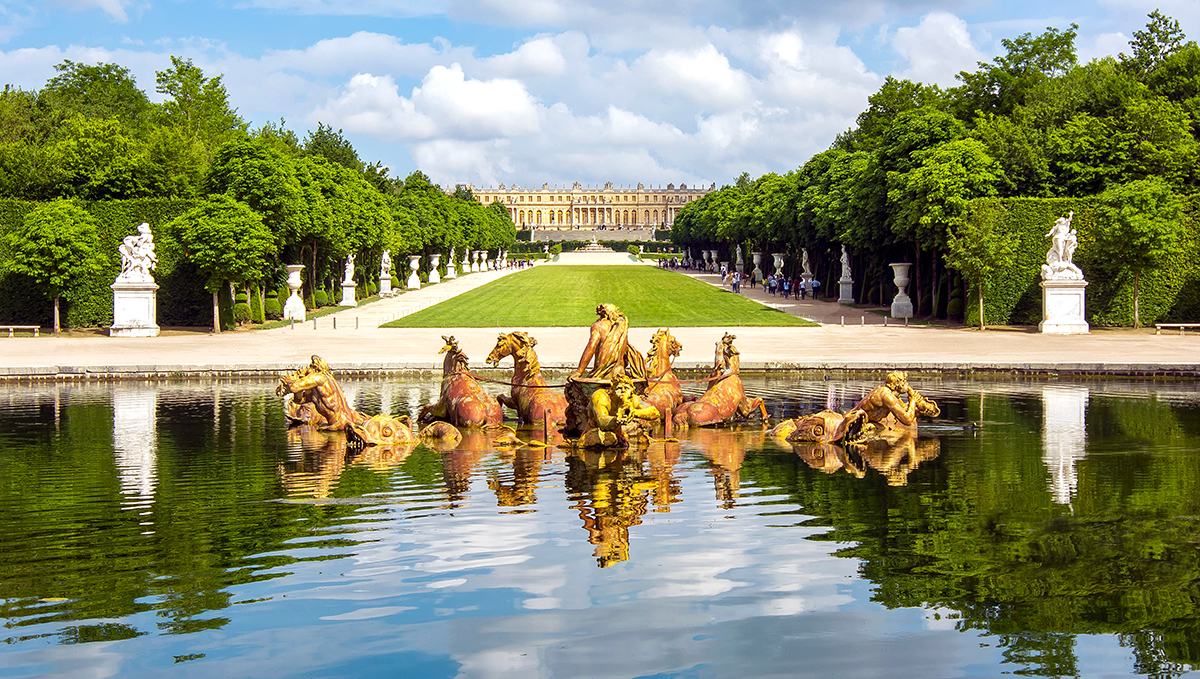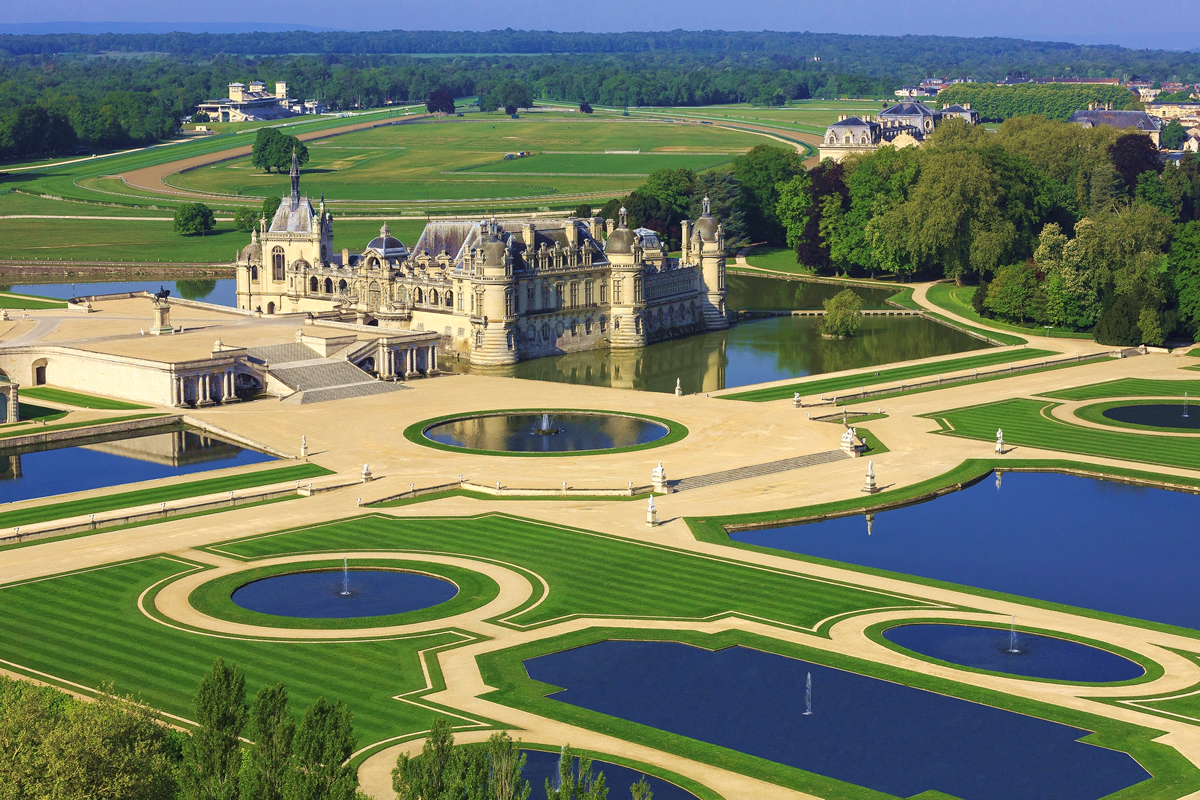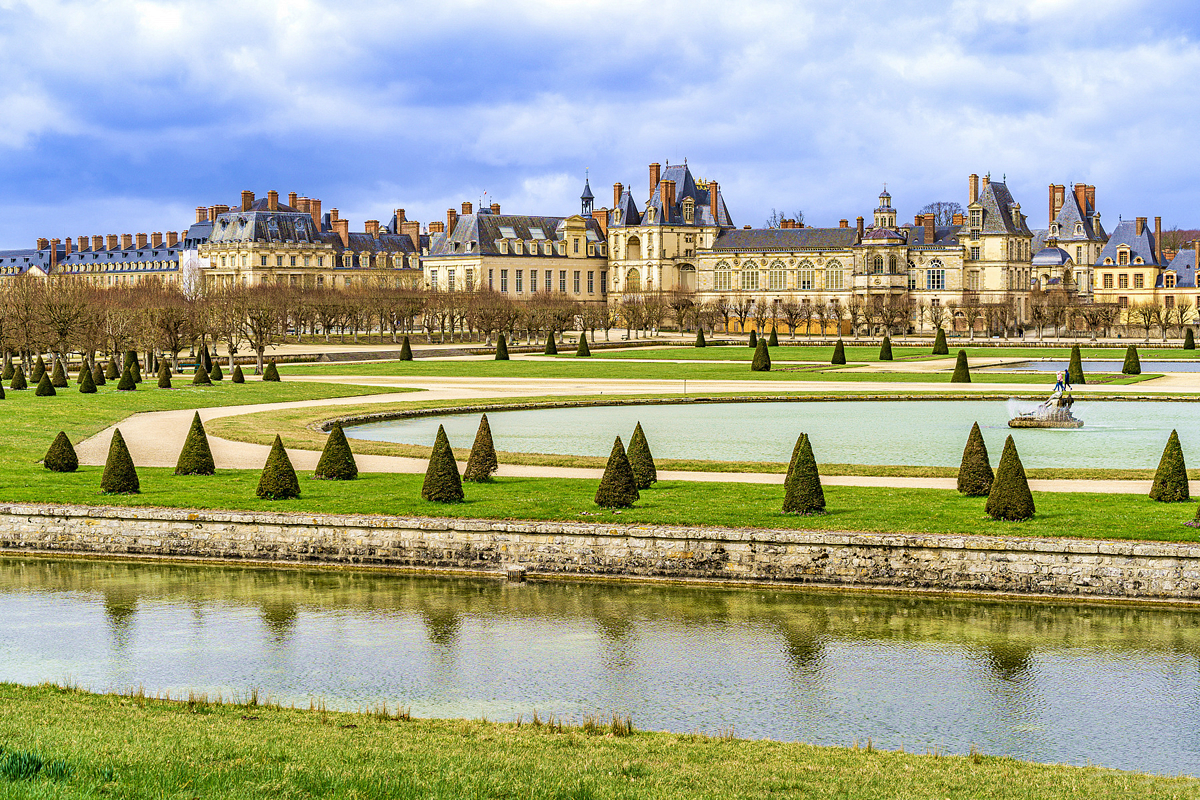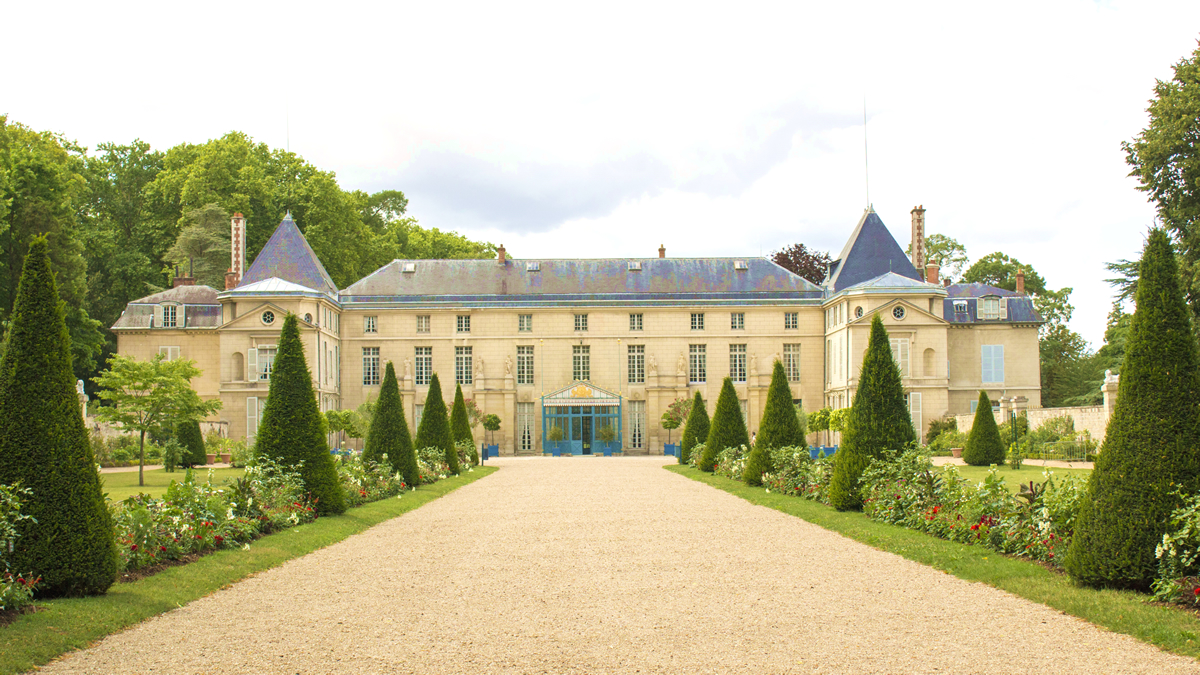
Chateaus & Castles of Paris
The châteaux of Paris illustrate Renaissance ideals and the excellence in architectural design and construction in France's history.
The châteaux and their surrounding gardens are cultural monuments which embody the ideals of the Renaissance and Enlightenment. These châteaux were built for the kings and queens and the aristocracy of France and resulted eventually in the general populace storming the Bastille and overthrowing the monarchy because of their waste and the indifferance show to the hardships being endured by the people.
Castles were often centred on a massive keep ringed by watchtowers, drawbridges and ramparts, the castle employed a range of then cutting-edge technology to repel would-be invaders: defensive pinch-points, armoured gateways and reinforced artillery turrets, as well as a network of ‘murder holes’ from which the defenders could unleash boiling oil, tar and crossbow bolts. Ironically, these innovations provided little defence against the greatest threat – betrayal from within – and, more often than not, the fortresses fell as a result of treachery.
Whether medieval, renaissance, gothic, classical, or contemporary France is home to estates from all architectural styles and periods with 40,000+ chateaux in the country. Our castles provide a window into our past, they were living, breathing places, where people worked, toiled, served, fought and died.
Here is our selection of the most amazing palaces and chateaux of the Paris all approximately within 50 klms of Chateau de la Grange.
The Palace of Versailles

The Palace of Versailles is a former royal residence built by King Louis XIV located in Versailles, about 19 kilometers (12 mi) west of Paris, France.
Louis XIII built a simple hunting lodge on the site of the Palace of Versailles in 1623. With his passing came Louis XIV who expanded the château into the beginnings of a palace that went through several changes and phases from 1661 to 1715. It was a favorite residence for both kings, and in 1682, Louis XIV moved the seat of his court and government to Versailles, making the palace the de facto capital of France. This state of affairs was continued by Kings Louis XV and Louis XVI, who primarily made interior alterations to the palace, but in 1789 the royal family and capital of France returned to Paris. For the rest of the French Revolution, the Palace of Versailles was largely abandoned and emptied of its contents, and the population of the surrounding city plummeted.
Napoleon I, following his coronation, used Versailles as a summer residence from 1810 to 1814, but did not restore it. Following the Bourbon Restoration, when the king was returned to the throne, he resided in Paris and it was not until the 1830s that meaningful repairs were made to the palace.
Chateau de Vaux le Vicomte

The Château de Vaux-le-Vicomte is a Baroque French château located in Maincy, near Melun, 55 kilometres southeast of Paris in the Seine-et-Marne department of Île-de-France.
Built between 1658 and 1661 for Nicolas Fouquet, Marquis de Belle Île, Viscount of Melun and Vaux, the Superintendent of Finances of Louis XIV, the château was an influential work of architecture in mid-17th-century Europe. At Vaux-le-Vicomte, the architect Louis Le Vau, the landscape architect André Le Nôtre and the painter-decorator Charles Le Brun worked together on a large-scale project for the first time. Their collaboration marked the beginning of the Louis XIV style combining architecture, interior design and landscape design.
Once a small château between the royal residences of Vincennes and Fontainebleau, the estate of Vaux-le-Vicomte was purchased in 1641 by Nicolas Fouquet, an ambitious 26-year-old member of the Parlement of Paris. Fouquet was an avid patron of the arts, attracting many artists with his generosity.
When Fouquet became King Louis XIV's Superintendent of Finances in 1656, he commissioned Le Vau, Le Brun and Le Nôtre to renovate his estate and garden to match his grand ambition. Fouquet's artistic and cultivated personality subsequently brought out the best in the three.
To secure the necessary grounds for the elaborate plans for Vaux-le-Vicomte's garden and castle, Fouquet purchased and demolished three villages. The displaced villagers were then employed in the upkeep and maintenance of the gardens. It was said to have employed 18 thousand workers and cost as much as 16 million livres.
Chateau de Chantilly

The Château de Chantilly is one of the finest jewels in the crown of France’s cultural heritage. It is the work of a man with an extraordinary destiny: Henri d’Orléans, Duke of Aumale, son of the last King of France, Louis-Philippe. This prince, who is considered to be the greatest collector of his time, made Chantilly the showcase for his countless masterpieces and precious manuscripts. The Château survived down through the centuries and remains as it was when the Duke of Aumale gave it as a gift it to the Institut de France in 1886, making it the perfect place to take a journey back in time to the heart of a princely residence. In tribute to his illustrious predecessors, the Princes of Condé, the Duke of Aumale called the series of rooms housing his collection the “Condé Museum”.
The Château de Chantilly is a historic French château located in the town of Chantilly, Oise, about 50 kilometres (30 miles) north of Paris. The site comprises two attached buildings: the Petit Château, built around 1560 for Anne de Montmorency, and the Grand Château, which was destroyed during the French Revolution and rebuilt in the 1870s. The château is owned by the Institut de France, which received it from Henri d'Orléans, Duke of Aumale.
A historic monument since 1988, it is open to the public. The château's art gallery, the Musée Condé, houses one of France's finest collections of paintings. It specialises in French paintings and book illuminations of the 15th and 16th centuries.
Palace of Fontainebleau

The Palace of Fontainebleau is located 55 kilometers southeast of the center of Paris, in the commune of Fontainebleau, is one of the largest French royal châteaux. The medieval castle and subsequent palace served as a residence for the French monarchs from Louis VII to Napoleon III. Francis I and Napoleon were the monarchs who had the most influence on the palace as it stands today.
The earliest record of a fortified castle at Fontainebleau dates to 1137. It became a favorite residence and hunting lodge of the Kings of France because of the abundant game and many springs in the surrounding forest. It took its name from one of the springs, the fountain de Bliaud, located now in the English garden, next to the wing of Louis XV. It was used by King Louis VII, for whom Thomas Becket consecrated the chapel in 1169; by Philip II; by Louis IX (later canonized as Saint Louis), who built a hospital and a monastery, the Couvent des Trinitaires, next to the castle; and by Philip IV, who was born and died in the castle.
Renaissance Château of Francis I (1528–1547)
In the 15th century some modifications and embellishments were made to the castle by Isabeau of Bavaria, the wife of King Charles VI, but the medieval structure remained essentially intact until the reign of Francis I (1494–1547). He commissioned the architect Gilles Le Breton to build a palace in the new Renaissance style, recently imported from Italy. Le Breton preserved the old medieval donjon, where the King's apartments were located, but incorporated it into the new Renaissance-style Cour Ovale, or oval courtyard, built on the foundations of the old castle. It included the monumental Porte Dorée, as its southern entrance, as well as a monumental Renaissance stairway, the Portique de Serlio, to give access the royal apartments on the north side.
Beginning in about 1528, Francis constructed the Galerie François I, which allowed him to pass directly from his apartments to the chapel of the Trinitaires. He brought the architect Sebastiano Serlio from Italy, and the Florentine painter Giovanni Battista di Jacopo, known as Rosso Fiorentino, to decorate the new gallery. Between 1533 and 1539 Rosso Fiorentino filled the gallery with murals glorifying the King, framed in stucco ornament in high relief, and lambris sculpted by the furniture maker Francesco Scibec da Carpi. Another Italian painter, Francesco Primaticcio from Bologna, ("Primatice" to the French), joined later in the decoration of the palace. Together their style of decoration became known as the first School of Fontainebleau. This was the first great decorated gallery built in France. Broadly speaking, at Fontainebleau the Renaissance was introduced to France.
Chateau de Malmaison

The Château de Malmaison is a French château situated near the left bank of the Seine, about 15 kilometres west of the centre of Paris, in the commune of Rueil-Malmaison.
Formerly the residence of Empress Joséphine de Beauharnais, along with the Tuileries it was the headquarters of the French government from 1800 to 1802, and Napoleon's last residence in France at the end of the Hundred Days in 1815.
Joséphine de Beauharnais bought the manor house in April 1799 for herself and her husband, General Napoléon Bonaparte, the future Napoléon I of France, at that time away fighting the Egyptian Campaign. Malmaison was a run-down estate, seven miles (12 km) west of central Paris that encompassed nearly 150 acres (0.61 km2) of woods and meadows.
Upon his return, Bonaparte expressed fury at Joséphine for purchasing such an expensive house with the money she had expected him to bring back from the Egyptian campaign. The house, for which she had paid well over 300,000 francs, needed extensive renovations; she spent a fortune doing them. However, Malmaison would bring great happiness to the Bonapartes. Joséphine's daughter, Hortense de Beauharnais would call it "a delicious spot".
Joséphine endeavored to transform the large estate into "the most beautiful and curious garden in Europe, a model of good cultivation". She located rare and exotic plants and animals to enhance the gardens. Joséphine wrote: "I wish that Malmaison may soon become the source of riches for all [of France]." In 1800, she built a heated orangery large enough for 300 pineapple plants. Five years later, she ordered the building of a greenhouse, heated by a dozen coal-burning stoves. From 1803 until her death in 1814, Josephine cultivated nearly 200 new plants in France for the first time.
The property achieved enduring fame for its rose garden. Empress Joséphine had the Belgian artist Pierre-Joseph Redouté (1759–1840) record her roses (and lilies), and prints of these works sell quite well, even today. She created an extensive collection of roses, gathering plants from her native Martinique and from other places around the world. She grew some 250 varieties of roses.
Chateaux Page 1.
Home ..The Chateau ..History ..Climate...Getting There ..Hotel...Weddings . Festivals ..Paris...Chateaux
France ..The Loire...Brittany ..Normandy...Wine Tourism...Delicacies ..French Food...Birdwatching
Nature . Roses...Furniture...Persian Art.. Ceramics...Tapestries...Costing/Booking...Contact
_________________________________________________________________________________________Copyright © March 2022__________________________________________________________________________________________________